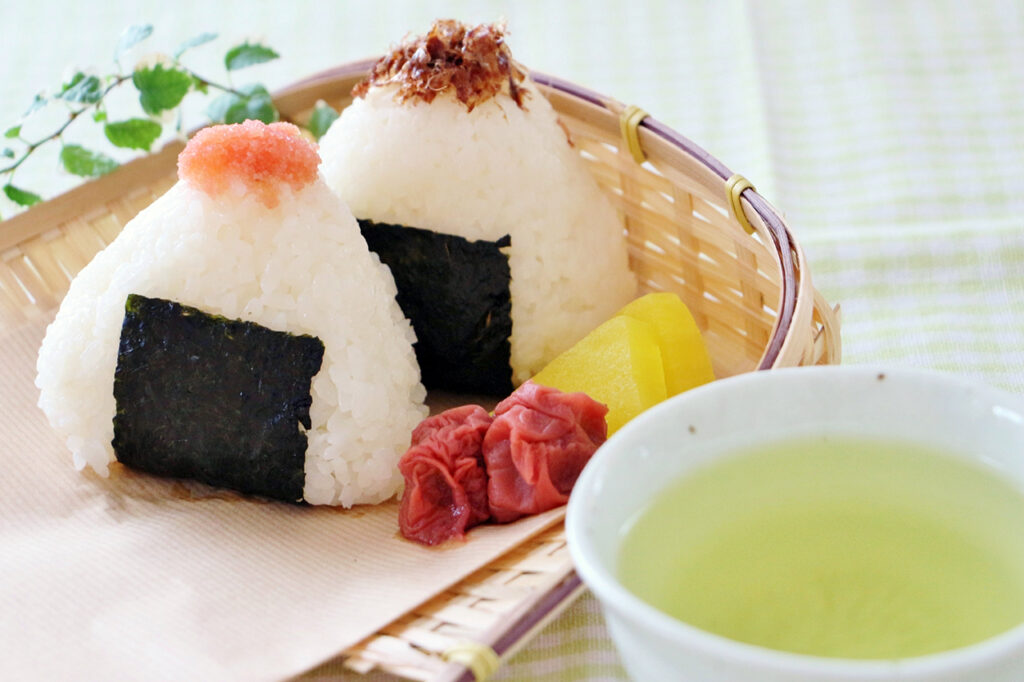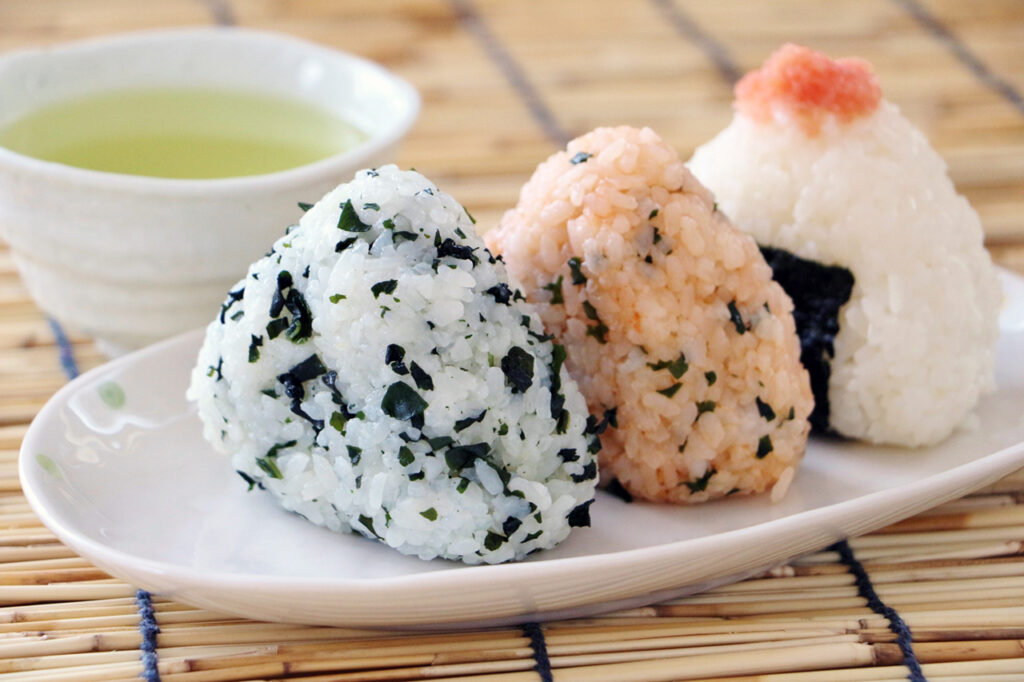If you think Japanese people know everything about their own food, think again!
Even many locals have never explored the perfect pairings of onigiri (rice balls) and Japanese tea—a combination that has existed for centuries but remains a hidden gem of Japanese cuisine.

Imagine this: You’re in Japan, sitting in a traditional teahouse or a quiet park, unwrapping a freshly made onigiri.
A Japanese friend offers you a cup of tea—but which one? Would a deep, rich sencha bring out the best flavors?
Or would a roasted hojicha create an unexpected harmony?
The truth is, most Japanese people don’t think deeply about matching their rice balls with tea.
But if you do, you’ll not only elevate your food experience—you’ll also have a surprising fact to share with locals!
In this guide, we’ll explore the art of pairing regional onigiri with the perfect Japanese tea—a topic that might just make you more of a food expert than the average Tokyoite.
1. Shio Musubi × Hojicha: A Perfectly Roasted Harmony
Shio musubi, a simple rice ball seasoned only with salt, highlights the pure flavor of Japanese rice.
The absence of additional fillings allows the natural sweetness and texture of the rice to shine.
When paired with hojicha, a roasted green tea with nutty and slightly caramelized notes, the result is a warm, comforting combination.
Hojicha’s roasted aroma and mild bitterness balance the saltiness of the rice, creating a soothing contrast.
This pairing is especially enjoyable in the evening, as hojicha is naturally low in caffeine, making it a perfect way to unwind after a long day.
Best enjoyed: Warm, with a focus on savoring the simplicity of each bite !
2. Sake Onigiri × Sencha: The Umami Boost
Sake onigiri, filled with salted salmon, is a favorite among Japanese people.
The rich umami of the salmon pairs beautifully with sencha, Japan’s most commonly consumed green tea.
Sencha’s bright, grassy flavor and slight astringency cut through the richness of the salmon, cleansing the palate and enhancing its savory depth.
This pairing is a celebration of umami, one of the fundamental tastes in Japanese cuisine.
The light bitterness of sencha enhances the subtle smokiness of the salmon, making each bite taste even fresher.
Best enjoyed: At lunchtime, when you need a refreshing yet satisfying meal.
3. Ume Onigiri × Genmaicha: A Balance of Tart and Toasty
Umeboshi (pickled plum) onigiri is a classic with a strong, tangy kick.
The bold acidity of umeboshi stimulates the taste buds, making it a popular choice for a quick pick-me-up.
To balance this intensity, genmaicha, a tea blended with roasted rice, provides a warm, nutty flavor that mellows out the sourness.
Genmaicha’s toasty aroma and gentle bitterness create a pleasant contrast, preventing the umeboshi from overwhelming the palate.
This pairing is both nostalgic and comforting, reminiscent of traditional Japanese home cooking.
Best enjoyed: As an afternoon snack or picnic treat, offering both refreshment and satisfaction.
4. Kombu Onigiri × Gyokuro: A Luxurious Contrast
Kombu onigiri, filled with simmered kelp, brings a deep umami flavor with a slightly sweet undertone.
This makes it an ideal match for gyokuro, a premium Japanese green tea known for its rich umami and smooth, velvety texture.
Unlike other green teas, gyokuro is shaded before harvest, leading to a high concentration of theanine, which gives it a naturally sweet and mellow character.
This pairs exquisitely with the briny sweetness of kombu, enhancing its complexity without overpowering it.
Best enjoyed: As a special treat, allowing time to savor the layered flavors.
Conclusion: Discover Your Perfect Pairing
Pairing onigiri with the right tea can elevate both elements, creating a more memorable dining experience.
Whether you prefer the roasted depth of hojicha, the refreshing brightness of sencha, the comforting toastiness of genmaicha, or the luxurious smoothness of gyokuro, there’s a perfect match for every taste.
Next time you enjoy onigiri, consider pairing it with a thoughtfully chosen tea—and surprise even your Japanese friends with your knowledge of these unique flavor combinations!

Next time, we’ll introduce the “freestyle” approach to making onigiri. There are no rules when it comes to making onigiri – the shape and ingredients are entirely up to you. Let’s discover your own perfect creation!
















